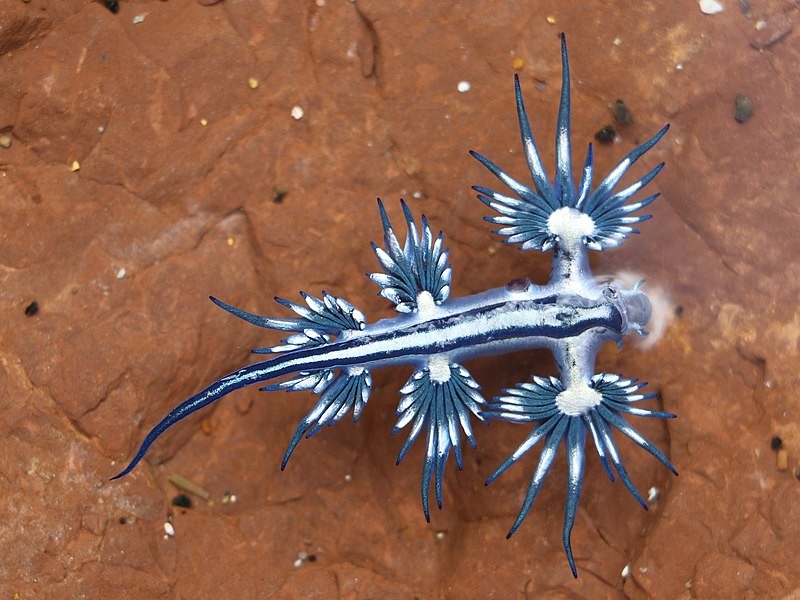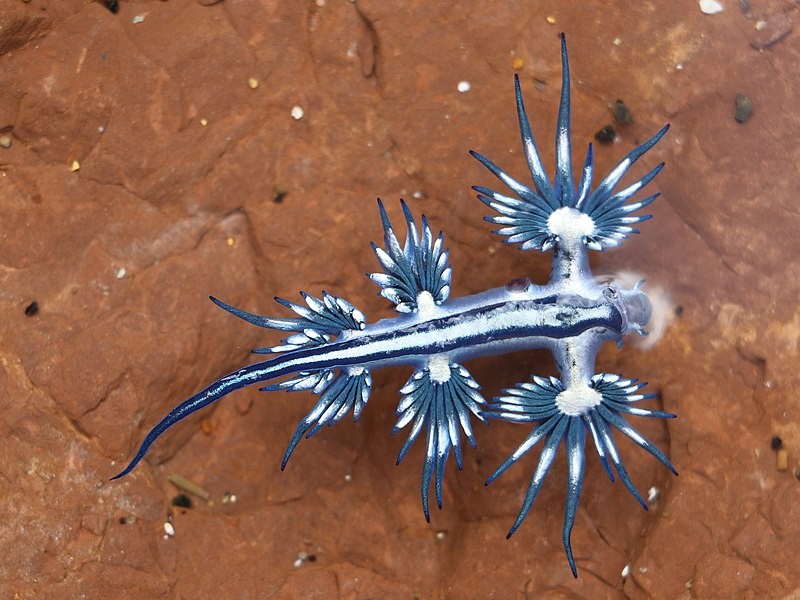[ad_1]
Glaucus atlanticus or the blue sea dragon is a species of shell-less gastropod mollusk that belongs to the family Glaucidae. Its color and appearance resemble a seemingly creature from another planet. Due to its appearance, this species earned various nicknames like blue dragon, blue angel, sea swallow, or blue sea slug. This marine animal can be found across the world’s oceans.
These blue sea slugs are widely known for their unique appearance but they are dangerous for humans and pets. Scientific records show that one sting from the ferocious, little creature can cause extreme pain, nausea, vomiting, acute allergic contact dermatitis, and post-inflammatory hyperpigmentation. G. atlanticus do not actively seek for humans but their stings are viewed as defense mechanisms.
Blue Sea Dragons

(Photo : Photo by Poyt448, Peter Woodard via Wikimedia Commons)
The blue glaucus lives in the tropical and subtropical waters of the Atlantic, Indian, and Pacific Oceans. They can grow to approximately 25 millimeters or about 1 inch long, with an estimated lifespan in the wild from one month to one year. The blue slug species also belong to the order Nudibranchia, whose members have a common characteristic of lacking gills, mantle cavity, and shell that are common with other mollusks.
The color of blue sea dragons ranges from blue to silver and light grey with a smooth skin type. These organisms often float along the surface of open water. However, its buoyancy makes it vulnerable to being washed up and going to unexpected places, where it eventually dies. The said species is venomous but it is not what one might think about poisonous animals in general.
Also Read: Blue-ringed Octopus: This Deadly Creature’s Venom is 1000 Times More Powerful Than Cyanide
Glaucus Atlanticus Poison
The blue sea dragon is poisonous not because it is born with innate hazardous toxins inside its body but rather due to other poisonous animals that it eats. Its main prey is the Man o’ War with its stinging nematocysts in its appendages. According to experts, the blue sea slug incorporates the stinging nematocysts or cells of its prey into its own body, making it equally dangerous and toxic.
In terms of blue sea dragon sightings, reported observations have been recorded off the coasts of some countries across Asia, Africa, North America, South America, Oceania, and Europe. In the US, the gastropod mollusk has washed up along the shores of Texas, the Gulf of Mexico, and other areas.
Despite the scientific community’s knowledge on Glaucus atlanticus, the sea creature’s total population worldwide remains unknown. However, scientists believe that the blue sea dragon population is not threatened and it is classified by the IUCN as an endangered species.
The blue glaucus is relatively harder to see compared with fish and other marine animals. This so-called partial camouflage is possible since the poisonous sea slug has a biological feature called countershading, which allows its blue underside to help it blend into the water’s surface, according to the organization Oceana.
Related Article: Poisonous Deep Sea Creatures Spotted In The Shores Of India, Public Warned Not To Touch The Species
© 2024 NatureWorldNews.com All rights reserved. Do not reproduce without permission.
[ad_2]



